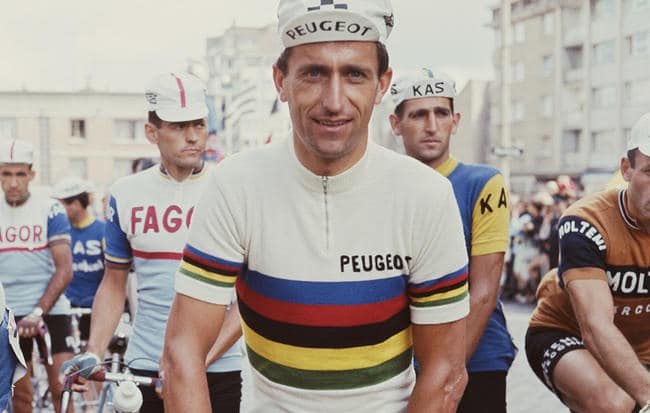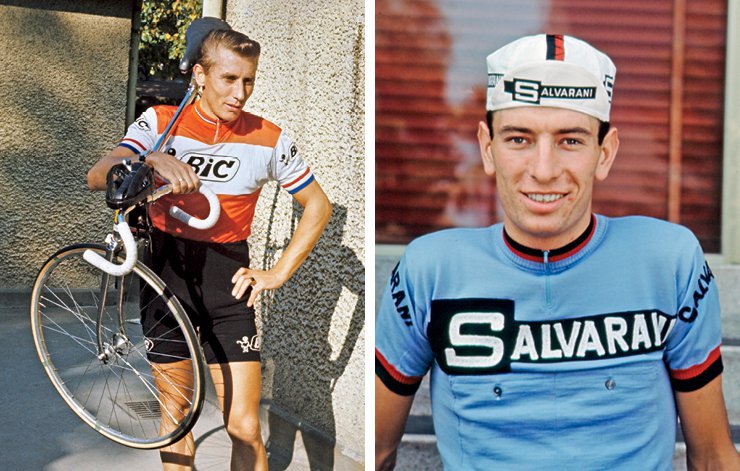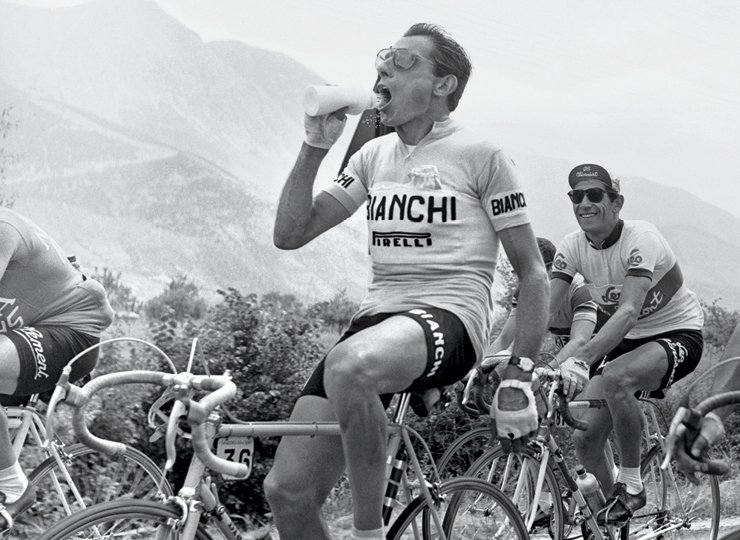The Rich History of the Cycling Jersey
A celebration of cycling’s most ubiquitous - and storied - piece of kit.
A celebration of cycling’s most ubiquitous – and storied – piece of kit. – By Chris Sidwells

RELATED: The Stories Behind 8 Iconic Cycling Jerseys
![]()
The images of these famous cyclists and the colors and designs of their jerseys became burned into my brain. Tom in the rainbow jersey, or the binary black and white of Peugeot-BP, the team for which he won Bordeaux-Paris in 1963, Milan-San Remo in 1964, the world title in 1965, and Paris-Nice in 1967. Felice Gimondi of Italy, winner of the Tour de France and Giro d’Italia, in the cool blue of Salvarani, a team that also included the supersprinter, “Mr. 1,000 Volts,” Marino Basso. Five-time Tour de France winner and master time trialist, Jacques Anquetil, in the vivid orange of BIC. Then there was Eddy Merckx, all-conquering in the red and white of Faema, and later in the burnt orange of Molteni.
RELATED: The Raddest Bikes of the Tour de France

They looked so stylish. The colours they raced in were bright and well-matched, and printed with fascinating foreign names—none of them household products I could find in South Yorkshire. I fixated on these jerseys because they came to represent the riders who wore them, who raced with such bravery, vigor, and dignity.
Even in the earliest days of cycling, great riders made jerseys famous. Like the plain kingfisher blue of Alcyon, worn by 1909 Tour de France winner François Faber. At 92 kilograms, the “Giant of Colombes” was the heaviest rider ever to win the Tour. The bold green and maroon Legnano jersey worn by Gino Bartali, who won the Tour de France in 1938 and 1948. Those victories were separated by World War II, during which Bartali, at his own risk, worked with the Assisi Underground to save the lives of many Jewish families. Then there is the famous Bianchi celeste: According to one legend, Edoardo Bianchi created the blue to match the eyes of an Italian queen, while another story holds that it was inspired by the band of sky above a Milanese sunset.

RELATED: What’s the Fastest Bike Colour?
Cycling has so many stories like this. They’re part of the rich history of this fascinating sport. And whether it’s a woolen pullover worn by the first racers or one of today’s sophisticated aerodynamic designs, the most iconic jerseys embody the feats and legends of the characters who wore them.

